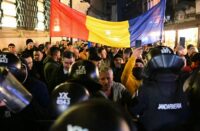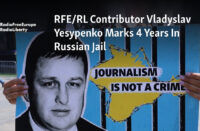“Diplomats based in Brussels are stating that it’s Europe’s time to shine, following the US President Donald Trump’s March 3 decision to temporarily halt military funding for Ukraine. However, it remains to be seen whether this assertion holds true. The critical factor is whether Europe possesses the political determination to offset an extended freeze on US spending towards Ukraine, a question that currently remains unanswered.
Details from Washington are awaited by NATO, before they make any official proclamation. According to diplomats from the alliance, the key aspect to watch out for is whether European allies can still acquire US weapons and transfer them to Ukraine. As one diplomat pointed out, Europe is currently in short supply of its own resources, but if it can access American arms and ammunition, the situation may be manageable.
When Ursula von der Leyen, the President of the European Commission, delivered her plans for escalating European defense expenditure and military aid to Ukraine on the morning of March 4, she refrained from referencing the US decision.
Von der Leyen, in a letter to EU member states ahead of an essential European Union summit in Brussels on March 6, expressed that Europe is facing an unprecedented danger and that the situation is drastically changing. She subtly hinted at Washington’s role, stating that as the President of the European Commission, strong ties with the United States are one of her primary objectives.
However, the question arises whether it’s time for the EU to bridge the funding gap left by the US. The answer might not be as immediate as expected. Both von der Leyen’s suggestions and the preliminary EU summit outcomes lack tangible proposals on how to directly enhance Ukraine, including details about funding beyond the already pledged 30 billion euros for Kyiv in 2025.
The issue lies in the requirement of an additional 30 billion euros this year if the US entirely withdraws its support. The European leaders had foreseen this scenario long before Trump’s announcement, especially after the delay in the aid package for Kyiv by the US Congress in 2024.
Von der Leyen’s “ReArm Europe” initiative seems to be entirely concentrated on increasing EU defense expenditure rather than directly assisting Ukraine. The initiative includes a loan of 150 billion euros for member states to fortify air defenses and drone stockpiles, provision for more flexibility on EU spending guidelines for countries that increase defense budgets, and an option to shift EU funds initially designated for less affluent regions towards military projects.
While these measures could lead to an increase in defense spending, the crucial question remains: Is this to assure EU citizens of their safety, or to ensure Ukraine can resist Russia’s attack? The answer may lie in a proposal by EU foreign policy chief Kaja Kallas to raise the needed 30 billion euros for Ukraine, using both proceeds from seized Russian assets and voluntary contributions from EU member states.
However, this plan is currently on hold. Some EU diplomats suggest that certain member states were not prepared to commit such a large amount at this time, while others pointed to Hungary’s opposition to military aid to Ukraine. In fact, Budapest has reportedly threatened to veto any summit text that challenges US efforts to broker a peace deal with Moscow.
Whether Ukraine will be part of Europe’s “moment” remains uncertain.”




